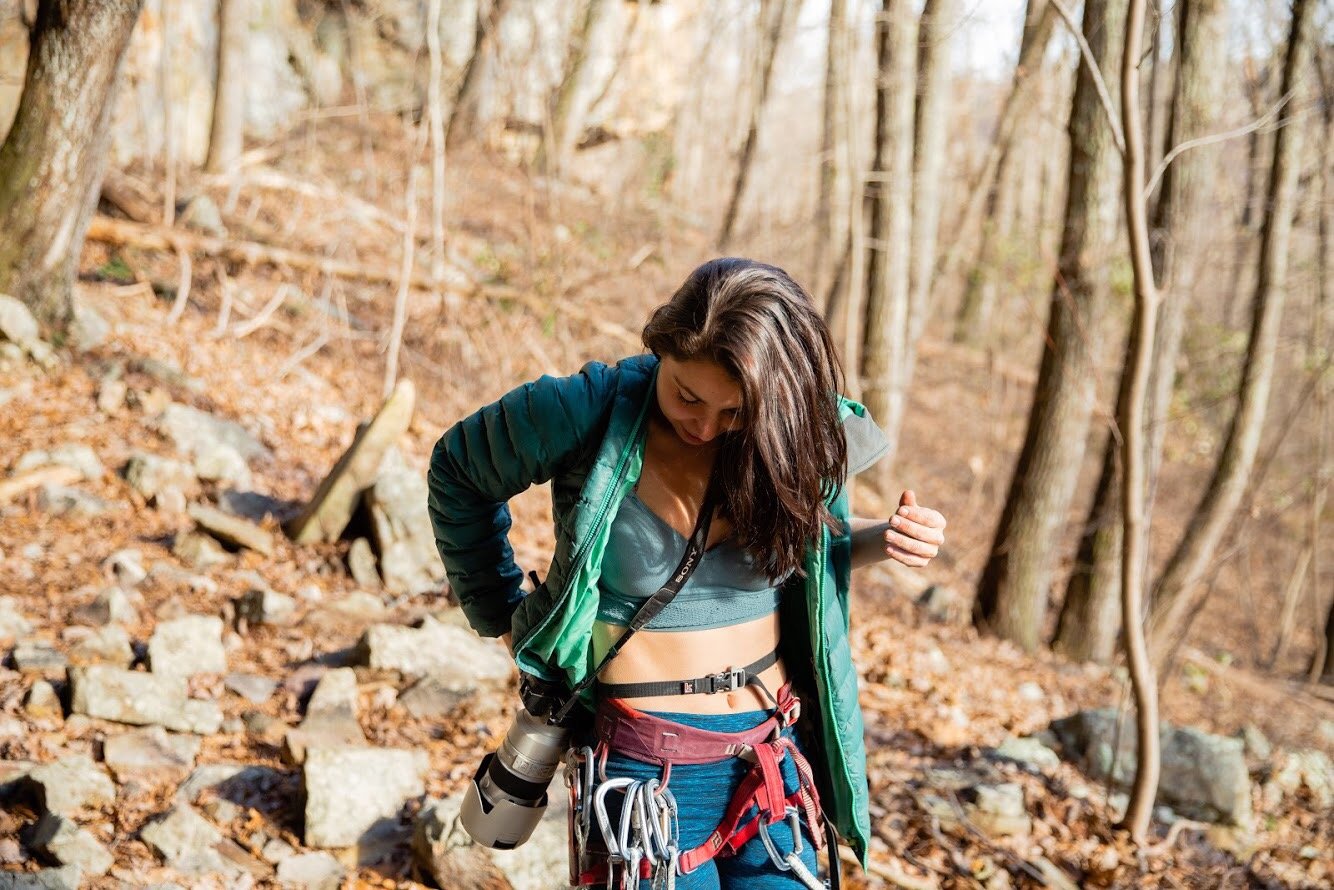What camera gear am I packing in my backpack?
Choosing the right camera body for me.
Like many, during the release of mirrorless camera’s I sold my entire collection of Canon gear and purchased the Sony A7Rii. Not that I had many complaints against canon, but it made sense to strip the mirror and convert to a lighter, more compact system.
As I began entering into the word of adventure photography, I started to learn this concept of sacrifice. Finding a balance between what is essential and what is weighing down my pack. On one of my early expeditions, it took several attempts to stuff my bulky Canon body along with several off-camera flashes into a dry bag and then my pack. The seams of the dry bag expanded to its full capacity while the bag itself barely folded to clear the bulk of the equipment inside. The remainder of the day was spent crawling through cave passages that were equivalent to the height of my bag, as I hauled it behind attached to my foot. I knew if I wanted to persevere energy for longevity on expeditions that I had to sacrifice weight. It only made sense to switch to a lighter camera system.. the mirrorless.
A look into my full set of photography gear.
Your camera and lens selection accommodate who you are as a photographer. It gives you the tools to capture your unique perspectives on the world. There is no right or wrong when it comes to selecting lenses, only the right one for the job. Below is a full list of equipment that I have collected over the years to help me capture my unique perspective:
My favorite Lenses on the field.
Every Photographer has go to lenses they can count on to get the job done. Since I favor shooting wide and allowing the athlete fall into the environment, I find myself packing these two lenses the most in my bag:
As I mentioned before, weight is something that is very important to manage well on the field. These two lenses allow me to keep my pack at a reasonable weight while allowing variety in storytelling from close-ups to wide shots. I prioritize my 24-70mm when I need to hone in on the details such as cave formations or even portraits of athletes. For deep-caving expeditions where lightweight is a priority, I bring along my 16 to 35mm and focus more on shots that show the scale of the environment.
The type of trip will also determine what lenses I will bring along. Occasionally i’m blessed with a short approach allowing me to haul around some of my beefy lenses such as 70-200mm (pictured above).
Why I chose to go with Godox speedlites?
I am always striving for efficiency when it comes to lighting, especially for underground expeditions where time is not a luxury.
In my early days of documenting expeditions, I favored the flash wave iii transmitter along with several cost efficient speedlites. Many cave photographers leaned towards Yongnuo for its low cost equipment and ability to be disposable against the caves destruction.
Although my system was working well for me, there was a very big con that held me back.. EVERYTHING WAS MANUAL. I had to run to each flash and adjust them manually. Take in mind, I have the amount of time it took for the team to map each room before NEVER SETTING FOOT IN IT AGAIN. Efficiency is a must.
Godox has done a great job pairing with Sony mirrorless systems and allowing one to adjust each flash from a master point… on the camera. This was a game changer, saving time and energy while prolonging my creativity underground.
My recommendation for a good first camera.
There is no such thing as a perfect camera out there. There is only the one that is most efficient for what is needed. Whether you are looking to adopt photography as a career path or purchase a camera to learn the techniques on, each camera comes equipped with its strengths and weaknesses. This is where research will really benefit you to determine which camera will work best for your photography needs. First, you need to determine what kind of photographer you are and what kind of environment you commonly shoot in. DPReview is a great resource for comparing specs on camera body’s and lens’s.
As an adventure photographer, I commonly photograph athletes in the outdoors letting them fall into the vast environment. Its no doubt that the compact system of Sony A7Riv attracted me first along with its 62.5 Megapixels, 10 frames per second on continuous shooting, extended ISO from 50 - 102,400 and 567-point phase detection autofocus system. I can now capture more frames as climbers make speedy movement to go for the clip or high-liners take the free fall into space as they take the whip. Not to mention the detail is hard to resist.
For those who are interested in a starter camera, I would recommend the Sony A7iii. Rated one of the best cameras for sports an action on DP Review, the camera also performs very well in low-light with its 24.2 megapixels. The bigger the megapixels the more light will let through to the sensor. This can be very effective for places on the field where light is not available, such as deep in a narrow slot canyon or behind a shaded tree. It is also an affordable body priced at $1998.00 brand new.


